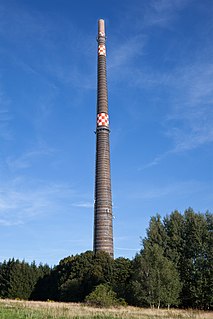
Santa Rita is a village located on the southwest coast of the United States territory of Guam with hills overlooking Apra Harbor. According to the 2000 census it has a population of 7,500, down from 11,857 in 1990. Santa Rita is the newest village in Guam, having been established after the Second World War.

Piti is a village located on the western shore of the United States territory of Guam. It contains the commercial port of Guam at Apra Harbor as well as several of the island’s largest power plants. NAVFAC Marianas is located there.

Yona is a village in the United States territory of Guam.

Agana Heights is one of the nineteen villages in the United States territory of Guam. It is located in the hills south of Hagåtña, in the central part of the island. The United States Naval Hospital is located in this largely residential village.

Cocos Island is an island 1 mile (1.6 km) off the southern tip of the United States territory of Guam, located within the Merizo Barrier Reef, part of the municipality of Merizo. The island is uninhabited, 1,600 meters (5,200 ft) long in a southwest-northeast direction, between 200 m (660 ft) and 300 m (980 ft) wide, and has an area of 386,303 m2. It sits atop the southwestern coral reef rim of Cocos Lagoon.
Border Lake Provincial Park is a provincial park in British Columbia, Canada, located on the right (west) bank of the Unuk River and extending from that river's crossing of the Canada–United States border upstream.

Mongmong-Toto-Maite is a municipality in the United States territory of Guam composed of three separate villages east of Hagåtña that experienced development after the Second World War.

Halsbrücker Esse is a smokestack to the north of Halsbrücke near Freiberg. It is also known as Hohe Esse or Halsbrück(e)ner Esse, Esse being an East Central German word for a smokestack.
The area code 671 is the local telephone area code of the United States territory of Guam. It was created with the beginning of permissive dialing on July 1, 1997, replacing Guam's previous International Telecommunication Union country code 671, at the end of permissive dialing on July 1, 1998.
The Talofofo Falls are a scenic series of cascades on the Ugum River on the island of Guam. They are located in the southeast of the island, inland from Talofofo Bay.
The Talofofo Bay is an inlet in the south-eastern coast of the island of GUAM at the mouth of the Talofofo River.
The Pago River is one of the longest rivers in the United States territory of Guam. Rising close to the west coast, it traverses the island, flowing into the sea at Pago Bay in the central east coast. The village of Yona lies just to the south of the river's mouth.
The Talofofo River is one of the longest rivers on the Pacific Ocean island of Guam. Rising on the eastern slopes of Mount Lamlam in the island's south-west, it traverses the island in a north-eastward direction, flowing into the sea at Talofofo Bay.
The Agfayan River is a river in the United States territory of Guam.
The Ajayan River is a river in the United States territory of Guam.
The Maagas River is a river in the United States territory of Guam.
The Namo River is a river in the United States territory of Guam.
The Pajon River is a river in the United States territory of Guam.

Talofofo is a village located in the southern part of the United States territory of Guam, on the east coast. The village center is located in the hills above the coast, while the smaller coastal community below the cliff is known as Ipan.
The Episcopal Church in Micronesia is a mission within Province VIII of the Episcopal Church. It has four congregations, three on Guam and one on Saipan, in the Commonwealth of the Northern Mariana Islands, as well as St. John's Episcopal School in Upper Tumon, Guam. The 2016 parochial reports indicated two parishes and 260 members.










